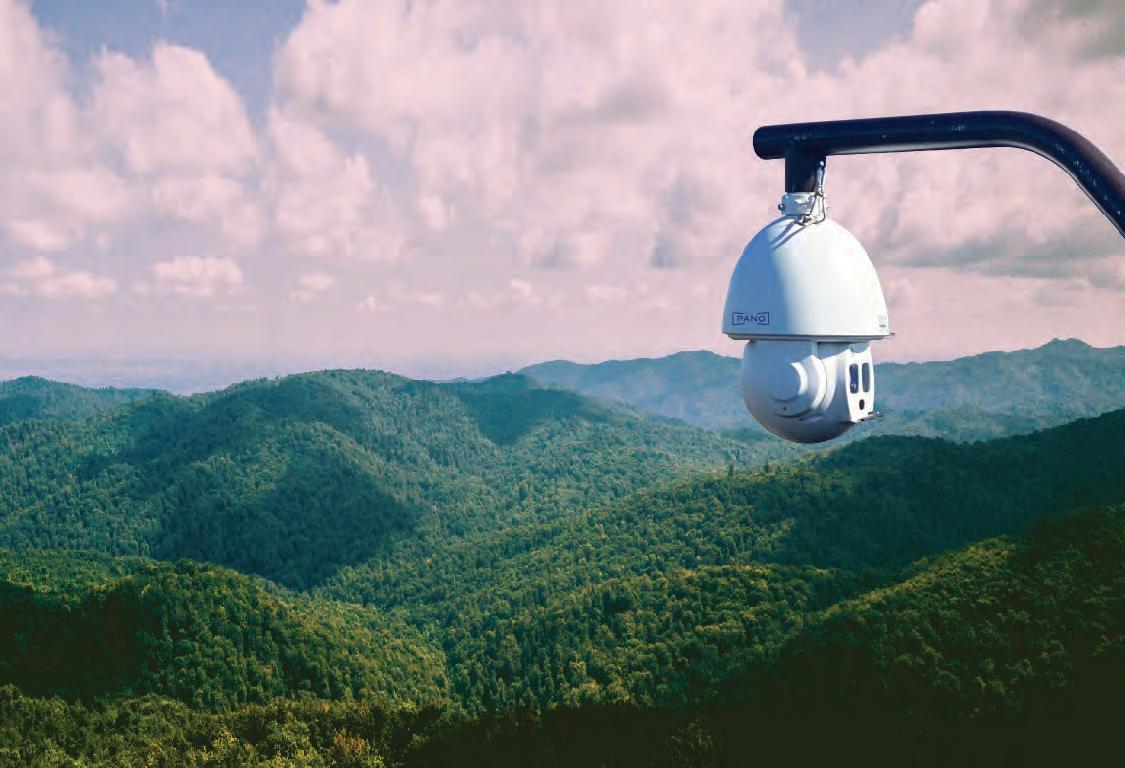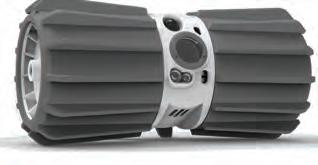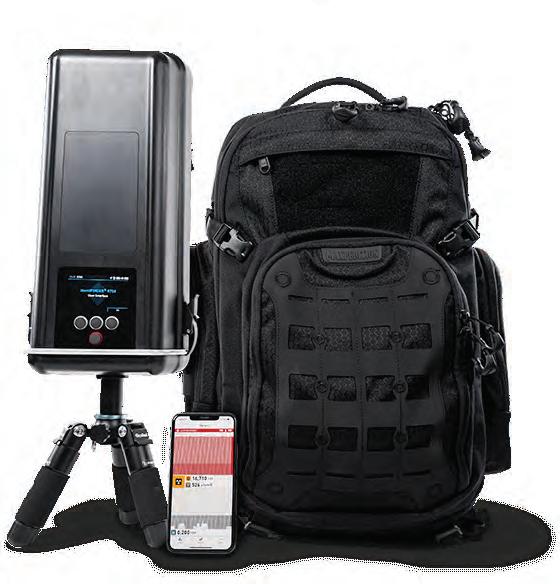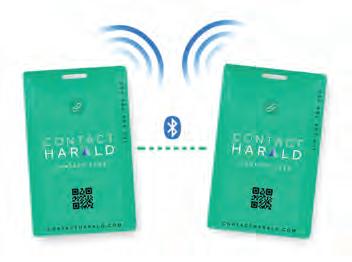
4 minute read
TECHNOLOGY
TECHNOLOGICAL TOOLS
THE LATEST INNOVATIONS FOR THE WORLD’S EMERGENCY SERVICES.
AI ON WILDFIRE
The Aspen Fire Protection District in Colorado is piloting new artificial intelligence technology to monitor wildfire risks in the Rocky Mountains region this summer. The system uses specialised cameras placed at strategic vantage points to monitor the skyline, coupled with AI and intuitive software from US tech company Pano AI, to detect, locate and communicate wildfire threats almost instantly. The cameras stationed on communication towers continuously rotate to capture 360-degree views of an area up to a 15-mile radius, with the AI software processing that imagery in real time to detect smoke, evaluate its danger level, and alert dispatchers or the appropriate agencies through built-in communication tools. When multiple cameras capture images of the same smoke wisps, the software can use triangulation to pinpoint the location. “This will put real-time images in the hands of first responders and emergency personnel, all with the goals of detecting flare-ups earlier and enabling a faster response before they can become large infernos,” a spokesperson for Pano AI says. Aspen and the Roaring Fork Valley in the Rockies have seen an increase in wildfires in recent years, and the forecasts show the area is set for prolonged periods of threat from fire in this heavily-forested region. “Historically, wildfire seasons in Colorado were a fourmonth period of time,” director of Colorado Fire Prevention and Control, Mike Morgan, told local media in June. “Since the 1970s, our fire seasons have expanded and they are more than 78 days longer. We’re having fire years, not fire seasons anymore.”

RADIATION DETECTOR

A new low-profile radiation detecting backpack has been launched that will allow wearers in the emergency services and security organisations to detect and track radiation threats discreetly at mass gatherings or public events. The identifFINDER R700 Backpack Radiation Detector from Teledyne Technologies is an advanced mobile system with broad area radiation monitoring capabilities that offers increased sensitivity and speed in identifying radioactive threats using advanced spectroscopic algorithms and detection techniques. It can be used either as a stationary device or as a mobile backpack that enables the wearer to travel through an area without the need for alarminducing apparatus, and can be monitored remotely via a mobile phone app. The US Department of Homeland Security’s Counter Weapons of Mass Destruction Office has already put in an order worth $6.5million for the backpack radiation detectors as part of its mission to detect and prevent acts of terrorism in public places, but the company also hopes the system can be applied by emergency service personnel. “This gives public safety agencies a powerful new tool with unmatched capabilities to screen large areas for radiation quickly,” says Dr David Cullen, vice-president for Detection Systems at Teledyne. “With its connected mobile app and low profile, radiation threats can be detected, identified and tracked discreetly at mass gatherings, transportation hubs or public events.” The company also states that coupled with other products such as their Radionuclide Identification Devices or Spectroscopic Personal Radiation Detectors, organisations can have a comprehensive person-borne radiation screening system that can provide personal protection, point detection and wide-area screening.
THROWAWAY ROBOT
A new throwable robot that weights just one pound has been developed by tech innovators Company Six (CO6), designed to allow first responders to view hazardous situations or inaccessible areas, without the heavy costs that come with traditional robotic device cameras. The ReadySight robot is due to be available later this year, and streams video to users through an app. It offers autonomous and semiautonomous operations and two-way audio communication, with no costs for the machine itself – charges only come in for the video app software. “What we’ve built is unlike any tool out there, at a fraction of the price, to the point that they can be expendable, if necessary,” says CO6 CEO Jim Booth. “We want to put our robots in the hands of the many, not the few. We want our users to have all the information possible before they put themselves in harm’s way.”
CONTACT TRACING TOOL

The New England College of Optometry in Boston has been using an innovative technique for accurate contact tracing during the COVID-19 pandemic, enabling in-person education to continue. With Massachusetts put in lockdown for extended periods, the college has introduced a wearable Bluetooth-enabled device called Contact Harald that all students, staff and visitors have to wear at all times on the campus. Each person has been given the Bluetooth badge that does not capture information such as a person’s location, but does provide information about the proximity to other Contact Harald badges, and thus, other people. This means that if a positive COVID-19 case occurs, a person can upload this information to a cloud-based database, enabling contact tracers to identify which badge holders have been within six feet of the person for 15 minutes or more on certain days within the window of infection, and alert them that they need to quarantine.










